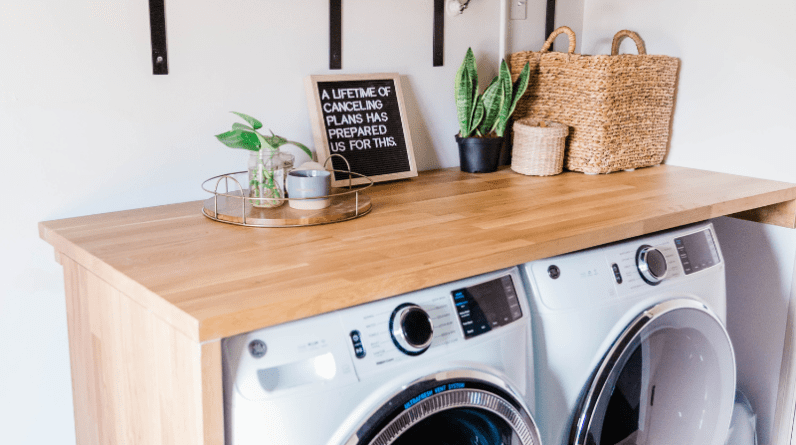
Introduction
Are you looking to leverage your property’s untapped potential and explore new avenues of income generation? Converting the garage into a rental income property might just be the innovative solution you’ve been searching for. As an award-winning copywriter and real estate enthusiast, I have seen firsthand the immense value this venture can bring to homeowners seeking financial growth and investment diversification.
In recent years, the concept of transforming garages into rental units has gained significant popularity among savvy property owners. Gone are the days when the garage served merely as a storage space for your vehicles and miscellaneous items. Today, forward-thinking homeowners are discovering the hidden gem within their properties and turning their garage spaces into profitable sources of passive income.
But what makes this idea so appealing? Firstly, the prospect of generating rental income from an underutilized space is undoubtedly enticing. By converting your garage into a rental property, you can take advantage of the growing demand for affordable housing options, making a positive impact on your local community while bolstering your financial security.
Moreover, this approach also holds the key to maximizing your property’s overall value. By adding an additional rental unit, you increase the potential resale value of your property substantially. It’s a win-win situation—improving the market value while simultaneously creating an income stream.
However, before you embark on this exciting journey, it’s essential to address common concerns and misconceptions that homeowners may have. Some might fear that converting the garage could negatively impact the property’s aesthetics or be fraught with legal hurdles. The truth is, with careful planning, adherence to local regulations, and a touch of creativity, transforming your garage can be a seamless and rewarding experience.
In this comprehensive article, we will delve into the art of converting your garage into a rental income property. We’ll guide you through the entire process, from assessing the feasibility of the conversion to designing the space, marketing the property, and managing tenants. By the end, you’ll have a clear roadmap to unlock your property’s hidden potential and embark on a path to financial prosperity.
So, if you’re ready to explore this exciting venture and discover how your garage can become a valuable asset, join us on this enlightening journey as we uncover the many benefits and strategies of converting the garage into a profitable rental income property.
Assessing the Feasibility of Conversion
Before diving into the transformation of your garage into a rental income property, it’s essential to conduct a thorough feasibility study to ensure a successful and profitable endeavor. Assessing the feasibility involves considering various factors, including legal requirements, financial implications, market demand, and potential challenges. Let’s explore each aspect in detail:
-
Legal Considerations
: Converting a garage into a rental unit involves navigating local zoning regulations, building codes, and obtaining necessary permits. It’s crucial to research your area’s specific rules regarding rental conversions and ensure compliance with all legal requirements. Engaging with local authorities or seeking professional advice can help clarify any ambiguities and ensure a smooth approval process.
-
Cost-Benefit Analysis:
Before undertaking any renovation project, it’s wise to conduct a comprehensive cost-benefit analysis. Calculate the total expenses associated with the conversion, including construction costs, permits, and potential disruptions. Compare this against the projected rental income over a specific period to gauge the return on investment (ROI). This analysis will help determine if the conversion aligns with your financial goals and whether it makes economic sense for your unique situation.
- Market Demand: Understanding the demand for rental properties in your area is essential. Research the local rental market to identify trends, rental rates, and tenant preferences. Proximity to amenities, schools, public transportation, and job opportunities greatly influences rental demand. Identifying your target tenant demographic and offering features that appeal to them will increase your rental property’s attractiveness and occupancy rates.
- Existing Property Condition: Evaluate the current condition of your garage and its potential for conversion. Some garages may require significant structural modifications, while others might be better suited for straightforward remodeling. Consider consulting a professional contractor or architect to assess the space and provide valuable insights into the conversion process.
- Potential Challenges: Be prepared to face potential challenges during the conversion process. For instance, you may encounter unexpected structural issues or face resistance from neighbors concerned about changes in the neighborhood dynamic. Understanding and preparing for these challenges will help you navigate them more effectively.
- ROI Timeline: Assess the time it will take to recoup your investment and start generating a positive cash flow from the rental property. Understanding the ROI timeline will help you manage your expectations and plan your finances accordingly.
By carefully evaluating these aspects, you can gain a clear picture of the feasibility of converting your garage into a rental income property. A successful conversion not only relies on the property’s potential but also on your dedication to thorough research and informed decision-making. In the next section, we will explore design and renovation strategies that will maximize the appeal and value of your rental property while ensuring a seamless tenant experience.
Design and Renovation Strategies
As you move forward with the decision to convert your garage into a rental income property, thoughtful design and renovation strategies are critical to ensuring both the aesthetic appeal of the space and its functionality for potential tenants. The goal is to create a desirable living space that complements your property while maximizing its rental potential. Here are some practical strategies to guide you through the design and renovation process:
- Space Planning and Layout: Start by envisioning the layout and functionality of the rental unit. Consider factors such as the number of bedrooms, bathrooms, and the overall living space. Create a floor plan that optimizes the use of the available space, allowing for comfortable living and efficient use of utilities. Prioritize open, versatile layouts that appeal to a wide range of tenants and maximize natural light.
- Maintain Architectural Integrity: Preserving the architectural integrity of your property is essential to maintaining its value and appeal. Ensure that the garage conversion blends seamlessly with the existing structure, both inside and outside. Harmonize the design elements, such as exterior siding, roofing, and window styles, to create a unified and visually pleasing property.
- Cost-Effective Renovations: Explore cost-effective renovation options to keep expenses in check while maintaining a high-quality living space. Repurpose existing materials, cabinetry, and fixtures wherever possible. Consider eco-friendly and energy-efficient upgrades that not only benefit the environment but also attract tenants seeking energy-saving features.
- Multi-Functional Spaces: Design the rental unit with multi-functional spaces to maximize its versatility and appeal. Incorporate features such as built-in storage solutions, foldable furniture, or convertible living areas that can adapt to tenants’ varying needs and lifestyles.
- Safety and Comfort: Prioritize the safety and comfort of your potential tenants. Install proper lighting both indoors and outdoors, ensuring well-lit pathways and entryways. Adequate ventilation and insulation are also crucial for maintaining a comfortable living environment throughout the year.
- Private Outdoor Space: If feasible, consider providing a private outdoor space for the rental unit, such as a small patio or garden area. Tenants highly value such spaces for relaxation and recreation, and they can significantly enhance the rental property’s overall desirability.
- Smart Home Features: Integrate smart home features where applicable, such as smart thermostats, keyless entry systems, or remote-controlled lighting. These modern conveniences can appeal to tech-savvy tenants and add a touch of luxury to the rental space.
- Aesthetics and Décor: Choose a neutral color palette and timeless design elements that appeal to a broad audience. Avoid overly personalized decor that might limit the appeal of the rental unit to potential tenants with different tastes.
By strategically planning the design and renovation of your garage conversion, you can create an inviting rental income property that attracts quality tenants and maximizes rental income potential. In the next section, we will explore effective marketing strategies to attract the right tenants and ensure a successful and rewarding rental experience.
Marketing and Managing the Rental Property
Congratulations on successfully transforming your garage into a desirable rental income property! Now comes the exciting phase of marketing your investment to attract the right tenants and effectively managing the property to ensure a positive rental experience. Here are some effective strategies for marketing and managing your new rental property:
- Compelling Property Listings: Create attractive and informative property listings to showcase the rental unit’s best features. Use high-quality photos and descriptive language to highlight the unique selling points of the space, such as the open layout, modern amenities, and private outdoor area. Emphasize the property’s proximity to essential amenities, schools, parks, and public transportation.
- Online Platforms and Social Media: Utilize various online rental platforms and social media channels to reach a broader audience of potential tenants. Websites like Zillow, Trulia, and Craigslist can be excellent platforms for advertising rental properties. Engage with potential tenants through social media by sharing engaging content, testimonials from satisfied tenants, and virtual property tours.
- Competitive Rental Rates: Set competitive rental rates based on thorough market research. Consider factors such as location, property size, and local rental trends to determine a fair and attractive rental price. Offering a competitive rate can help you attract quality tenants and maintain a low vacancy rate.
- Tenant Screening: Implement a comprehensive tenant screening process to ensure you choose reliable and responsible tenants. Screen applicants for their credit history, rental history, employment status, and references. A thorough screening process reduces the risk of potential issues with non-payment or property damage.
- Professional Lease Agreements: Draft clear and legally sound lease agreements that outline the terms and conditions of the rental arrangement. Include important details such as rental amount, security deposit, lease duration, and rules regarding property maintenance and pet policies. Having a professional lease agreement provides protection and clarity for both you and your tenants.
- Responsive Property Management: As a responsible landlord, prioritize timely responses to tenant inquiries and maintenance requests. Regularly inspect the property to identify and address maintenance issues promptly. A responsive and caring approach fosters tenant satisfaction and encourages them to treat the property with respect.
- Stay Informed About Landlord-Tenant Laws: Keep yourself updated on local landlord-tenant laws and regulations to ensure you comply with all legal requirements. Understanding your rights and responsibilities as a landlord is essential for creating a transparent and legally compliant rental experience.
- Encourage Long-Term Tenancy: Promote a positive and enjoyable living experience for your tenants to encourage long-term tenancy. Consider offering lease renewal incentives or rewarding tenants for their loyalty. Long-term tenants provide stability and reduce the turnover costs associated with finding new occupants.
By effectively marketing your rental property and implementing strong property management practices, you can attract quality tenants and ensure a smooth and successful rental experience. The careful planning and dedication you invested in converting your garage into a rental income property will undoubtedly pay off as you enjoy the benefits of passive income and property appreciation. Congratulations on taking this bold step toward financial growth and property investment success!






